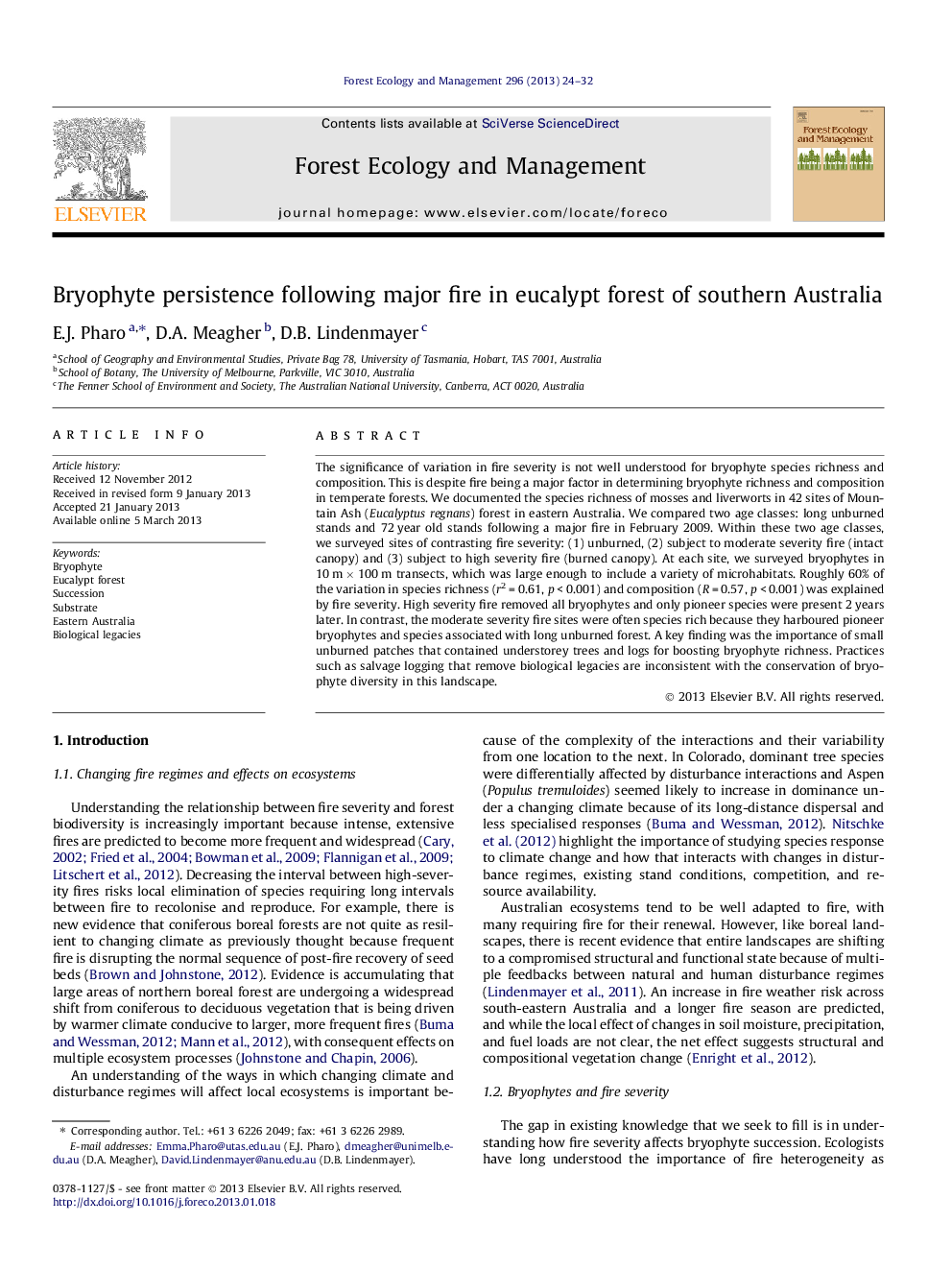| Article ID | Journal | Published Year | Pages | File Type |
|---|---|---|---|---|
| 87142 | Forest Ecology and Management | 2013 | 9 Pages |
The significance of variation in fire severity is not well understood for bryophyte species richness and composition. This is despite fire being a major factor in determining bryophyte richness and composition in temperate forests. We documented the species richness of mosses and liverworts in 42 sites of Mountain Ash (Eucalyptus regnans) forest in eastern Australia. We compared two age classes: long unburned stands and 72 year old stands following a major fire in February 2009. Within these two age classes, we surveyed sites of contrasting fire severity: (1) unburned, (2) subject to moderate severity fire (intact canopy) and (3) subject to high severity fire (burned canopy). At each site, we surveyed bryophytes in 10 m × 100 m transects, which was large enough to include a variety of microhabitats. Roughly 60% of the variation in species richness (r2 = 0.61, p < 0.001) and composition (R = 0.57, p < 0.001) was explained by fire severity. High severity fire removed all bryophytes and only pioneer species were present 2 years later. In contrast, the moderate severity fire sites were often species rich because they harboured pioneer bryophytes and species associated with long unburned forest. A key finding was the importance of small unburned patches that contained understorey trees and logs for boosting bryophyte richness. Practices such as salvage logging that remove biological legacies are inconsistent with the conservation of bryophyte diversity in this landscape.
► Bryophyte species richness and assemblage composition was highly correlated with fire severity. ► High severity fire removed all bryophytes so that only pioneer species were present 2 years later. ► At moderate severity fire sites, we found pioneer bryophytes as well as species associated with long unburned forest. ► Unburned areas in the moderately burned sites were vital for harbouring bryophytes.
